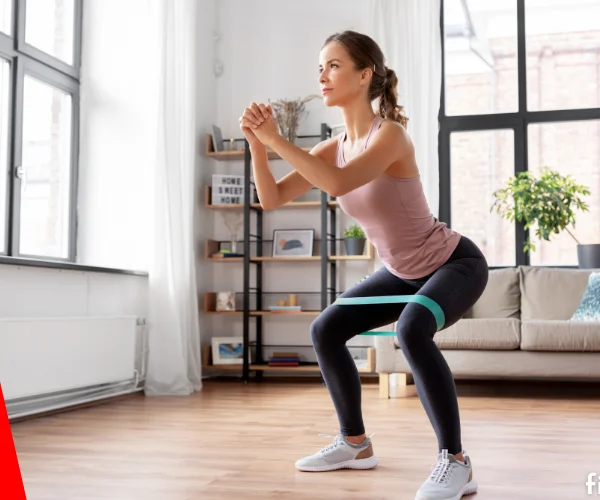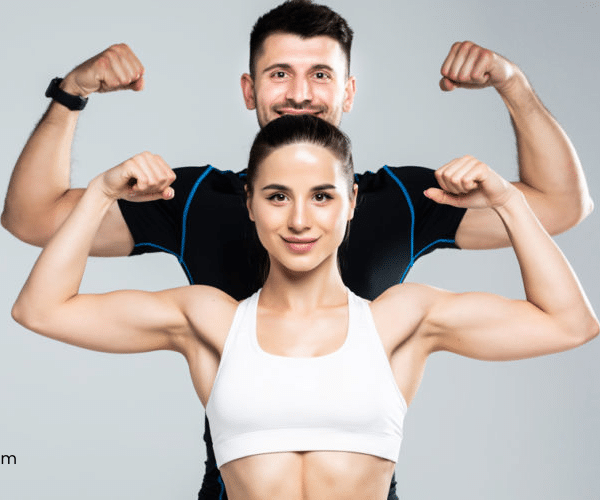Fitness experts are sure you can get in shape without going to the gym. And the exercises that can be practiced at home, such as planking, twisting, and squats, are perfect for that. But they may seem simple at first sight – in fact, a lot of people hurt them. And this can not only affect their effectiveness but also cause health problems.
At Bright Side, we’ve learned some common mistakes that people make while doing basic exercises. So we’ve studied the advice of fitness specialists and now we know how to fix them.
1. Plank:
The board is one of the most effective basic exercises that engage all parts of the body. But the poor performance of this exercise resets its effectiveness and can lead to problems in the spine.
Mistakes:
- The elevation of the pelvis causes a misallocation of the load, which exerts too much pressure on the shoulders, causing pain in the neck.
- Bending the lower back reduces abdominal muscle engagement, harms the knees, and can cause pain in the lower back.
- Poor head position: Looking up or on the side can lead to cervical osteochondrosis.
The right technique:
- Place your elbows just under the joints of your shoulders, relax your neck and look down.
- Your legs should be straight and your gluteal muscles should be engaged.
- Your back should be straight, your belly should be stretched and your hips should form a straight line with your shoulders and heels.
2. Dips:
It is a basic exercise that makes the triceps and upper bodywork that is suitable for beginners because of the simplicity of its execution. As a general rule, triceps falls should be done using a bench or chair, but after a certain level of training, you can also fall from the ground.
The right technique:
- Place the palms shoulder-wide apart on the edge of a sturdy chair, stabilize the hips and stretch the legs forward, with the heels resting on the floor.
- Slowly lower your body with the power of your hands. In the end, your elbows should form a 90° angle. Then push the bank away with your arms and return to the starting position.
- Your back should be straight and as close as possible to the chair. Your elbows should be bent backward, not to the sides.
3. Crunches:
To perform a crunch correctly, you should lie down on the floor and bend your knees at a 90° angle. And then, as you tighten your abdominal muscles, you should gently lift your shoulders off the ground. It seems that there is nothing simpler than this exercise, but many people still make some mistakes.
- A wide range of motion. If you lift the body too high, the main load is on the hip muscles and not on the abdominal muscles.
- Curved neck. In this case, some of the load is transferred to the neck or hands when you hold it behind your head and put pressure on the back of the head.
- The tightening of the legs reduces the strain on the abdominal muscles, as the hip muscles are stressed.
The right technique:
- Bend your knees at a 90° angle and press the lower back on the ground. Your hands can be crossed over the chest or placed behind the head.
- Tighten the abdominal muscles, gently lift the shoulders 6-9 cm from the ground, and then slowly lie down on the floor again without relaxing the muscles.
- Leave your feet on the floor during the exercise and look straightforward.
4. Push-ups:
Studies show that a lighter version of push-ups requires the same target muscles, but without excessive strain. It can be push-ups from the knees or toes, but you can also make them from the wall, a bench, or a sofa.
The right technique:
- Place your hands on the floor, the sofa, or a wall. Keep your body straight, like a cord, and lower it as low as possible. Then lift off gently.
- Their arms should be slightly further apart than shoulder-width. Your fingers should point forward.
- It is perfect if your elbows stand at a 45° angle to the body.
5. Squats:
Everyone knows that when you squat, you shouldn’t lift your heels off the ground or push your back through, but there are also fewer obvious mistakes.
- They do not bend the knees towards the toes, which increases the strain on the joints and takes less strain on the deducting muscles of the thighs.
- Your knees fall forward, beyond your toes. This reduces the strain on your buttocks and can lead to pain.
- Some people raise their heads during the squat. You don’t have to do that: it ruins balance and technique and can also cause pain in the lower back and neck.
The right technique:
- The back should be straight, you should look forward, and your feet should stand flat on the floor throughout the exercise.
- Your knees should not go beyond your toes. To improve your technique, remember to lower your buttocks instead of bending your legs.
- The kneecap should point in the same direction as the toes.
- The squat should be carried out evenly and without jerking.
- Much depends on the depth of the squat and the width of the setting.
- It is right to go into the squat until the hips are parallel to the ground. Incomplete squats put a poor strain on the thigh muscles, and the knees are overloaded if the squats are too deep.
- The further you disassemble the legs, the more you strain the muscles of the inner thighs and buttocks.
6. Lunges:
If you perform them correctly, lunges train the buttocks and quad muscles in the same way as squats and deadlifts some mistakes.
- The knee of the front leg goes beyond the toe line. This leads to uneven distribution of the load and to the intervention of the front part of the thigh, which means that the buttocks cannot work.
- The body falls forward, which unnecessarily strains the knee of the leg and disturbs the balance.
The right technique:
- Take a big step forward and shift your body weight to the front leg. Keep your body straight.
- Lower down until the thigh of the leg is parallel to the ground. Both legs should form a 90° angle between the upper and lower legs.
- It is important that the knee does not go beyond the toes.
- Return to the starting position by pressing up with the heel of the leg.
7. Side lunges:
This exercise perfectly swathes the inner thigh muscles. It is very simple, but the improper execution can adversely affect the spine and knees, as well as reducing effectiveness and this some mistakes.
- The foot of the stretched leg does not completely touch the ground, and the toes of the other leg are directed outwards.
- The knee of the leg is shifted to the side.
- The back leans forward.
The right technique:
- Take a step to the side and pull the pelvis backward so that the thigh of the leg is almost parallel to the floor.
- Both feet stand flat on the floor and the toes point forward. The back is straight.
- The knee of the leg is above the foot, and the lower leg is pinning to the ground.
8. The boat exercise:
Regular boating is a perfect way to strengthen the lumbar area, improve blood flow to the pelvic organs and relieve back pain but many people still make some mistakes.
- The knees are pushed to the ground in the starting position so that the muscles of the legs are stressed instead of the back muscles.
- The limbs are bent during the exercise, which reduces the strain on the back muscles.
The right technique:
- Starting position: Lay down with your face and stretch your arms and legs as far as possible. Tighten your hips so that the knees do not touch the floor.
- Lift your arms, chest, and legs off the ground. Lift them slowly and hold them for 2-4 seconds. Then return to the starting position.



